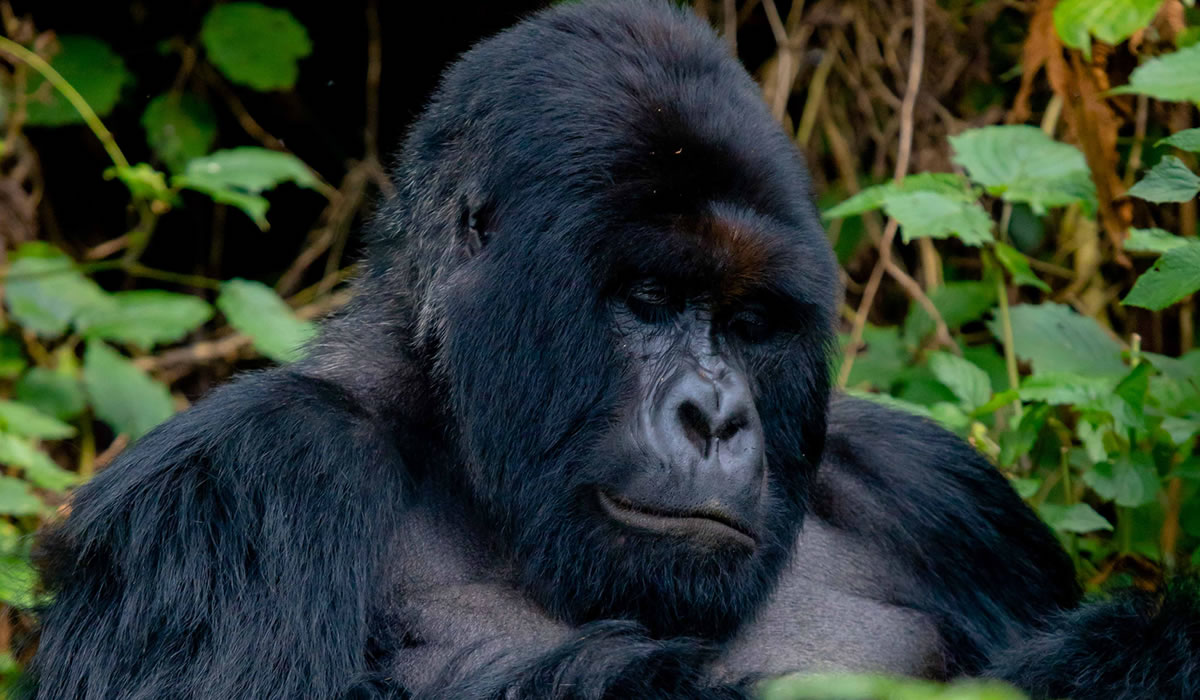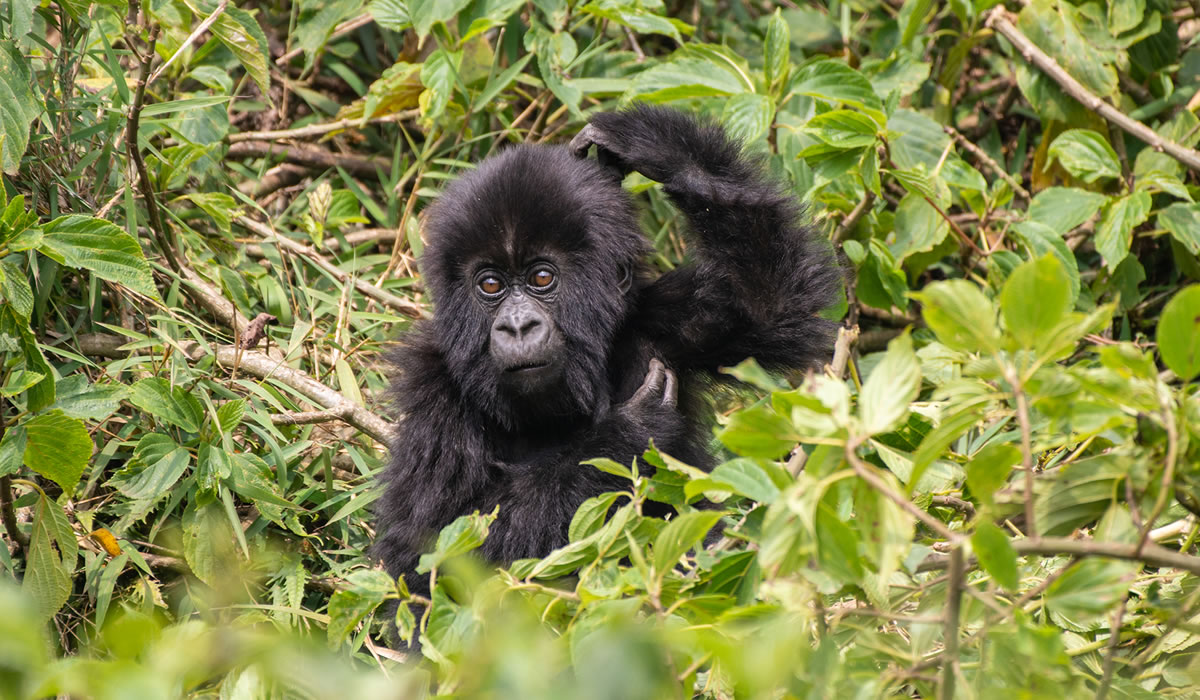Gorilla Trekking in Rwanda and Uganda is one of the most thrilling wildlife experiences in the world. These two East African countries are home to the rare and majestic mountain gorillas, found in only a few locations globally. Trekking through lush rainforests to encounter these gentle giants in their natural habitat is an unforgettable adventure that attracts travelers, wildlife enthusiasts, and conservationists from all over the globe.
This detailed guide covers everything you need to know about gorilla trekking in Rwanda and Uganda, including the best locations, costs, permits, trekking experiences, and conservation efforts.

Why Choose Rwanda and Uganda for Gorilla Trekking?
Rwanda and Uganda are two of the only three countries where mountain gorillas can be found in the wild (the third being the Democratic Republic of Congo). These countries offer well-organized trekking experiences, excellent conservation efforts, and safe tourism practices. The close proximity of their gorilla habitats to international airports also makes them easily accessible for travelers.
Best Places for Gorilla Trekking
1. Volcanoes National Park, Rwanda
Volcanoes National Park, located in northwestern Rwanda, is one of the most famous gorilla trekking destinations. This park is part of the larger Virunga Conservation Area, which spans Rwanda, Uganda, and the Democratic Republic of Congo. It is best known as the place where renowned primatologist Dian Fossey conducted her research on mountain gorillas, leading to global awareness and conservation efforts.
- Number of Gorilla Families: Around 12 habituated gorilla groups
- Trekking Difficulty: Moderate to strenuous, depending on the location of the gorillas
- Best Time to Visit: Dry seasons (June to September and December to February)
2. Bwindi Impenetrable National Park, Uganda
Bwindi Impenetrable National Park is a UNESCO World Heritage Site and home to nearly half of the world’s remaining mountain gorillas. Located in southwestern Uganda, Bwindi offers a dense, jungle-covered terrain that adds an extra level of adventure to the trekking experience.
- Number of Gorilla Families: Over 20 habituated gorilla groups
- Trekking Difficulty: Challenging, as the forest is dense and the terrain is rugged
- Best Time to Visit: Dry seasons (June to September and December to February)
3. Mgahinga Gorilla National Park, Uganda
Mgahinga is Uganda’s smallest national park but is part of the Virunga Conservation Area. It is an alternative to Bwindi for those looking for a more intimate and less crowded gorilla trekking experience.
- Number of Gorilla Families: 1 habituated group (Nyakagezi)
- Trekking Difficulty: Moderate
- Best Time to Visit: Dry seasons (June to September and December to February)
The Gorilla Trekking Experience
Gorilla trekking typically begins early in the morning with a briefing from park rangers about the rules and guidelines. Trekkers are then divided into small groups, each assigned to a specific gorilla family. The trek can take anywhere from 1 to 6 hours, depending on the location of the gorillas, the terrain, and weather conditions.
Once the gorillas are found, visitors are allowed to spend a maximum of one hour with them. This time is strictly regulated to minimize human impact on the gorillas. Observing these magnificent primates up close as they play, groom each other, and interact in their family groups is a truly awe-inspiring experience.
Gorilla Trekking Permits and Costs
To protect the gorillas and limit human impact, both Rwanda and Uganda require trekkers to obtain permits.
- Rwanda Permit Cost: $1,500 per person
- Uganda Permit Cost: $700 per person (Bwindi & Mgahinga), $1,500 for gorilla habituation experience
Permits must be booked in advance, as only a limited number of tourists are allowed to trek each day. The higher price in Rwanda reflects the shorter travel time from the capital (Kigali) to Volcanoes National Park and the well-developed tourism infrastructure.
What to Pack for Gorilla Trekking
Packing appropriately is essential for a comfortable and successful trekking experience. Here are the key items to bring:
- Hiking Boots: Sturdy, waterproof boots for trekking through muddy and uneven terrain.
- Long-Sleeved Shirts & Trousers: To protect against insect bites and scratches from vegetation.
- Rain Jacket/Poncho: Rain is common in tropical forests.
- Gloves: Protects hands while gripping branches and vines.
- Walking Stick: Provided by the park, but you can bring your own for extra stability.
- Backpack: To carry water, snacks, and other essentials.
- Camera (No Flash): Capture incredible moments without disturbing the gorillas.
Conservation and Responsible Tourism
Both Rwanda and Uganda have made significant efforts in gorilla conservation, leading to an increase in mountain gorilla populations. The funds generated from permits contribute to:
- Anti-poaching efforts
- Habitat preservation
- Community development programs
- Scientific research
Tourists play a crucial role in conservation by following strict guidelines, such as maintaining a 7-meter distance from the gorillas, not making sudden movements, and avoiding trekking if they are ill to prevent transmitting diseases to the gorillas.
Gorilla Trekking vs. Gorilla Habituation Experience
For those seeking a deeper understanding of gorillas, Uganda offers a unique Gorilla Habituation Experience in Bwindi. Unlike regular trekking, which allows one hour with the gorillas, this experience grants up to four hours with a semi-habituated gorilla family. This allows visitors to observe researchers and conservationists as they work to familiarize gorillas with human presence.
- Cost: $1,500 per person
- Duration: Up to four hours with the gorillas
- Best For: Enthusiasts interested in conservation and primate behavior
Best Time for Gorilla Trekking
Gorilla trekking is available year-round, but the best time to visit is during the dry seasons:
- June to September (Peak Season)
- December to February (Short Dry Season)
During these periods, trails are drier, making trekking easier. However, permits sell out fast, so early booking is recommended.
Gorilla trekking in Rwanda and Uganda is a transformative experience that combines adventure, wildlife conservation, and cultural immersion. Whether you choose the misty volcanoes of Rwanda or the dense jungles of Uganda, encountering mountain gorillas in their natural habitat is a memory that lasts a lifetime.
By choosing ethical tour operators like Judith Safaris, travelers ensure that their visit contributes to the preservation of these incredible primates and supports local communities. Ready for an adventure of a lifetime? Book your gorilla trekking safari today and be part of this extraordinary journey into the wild!


